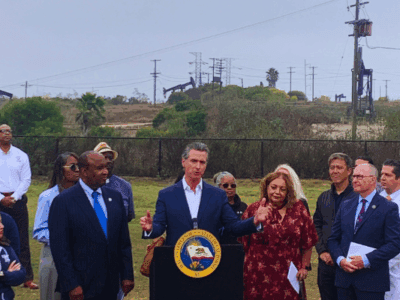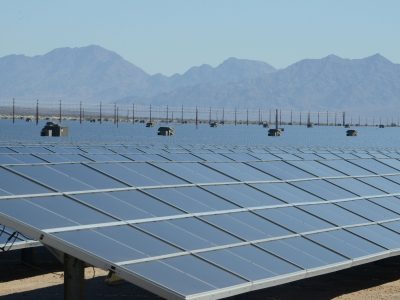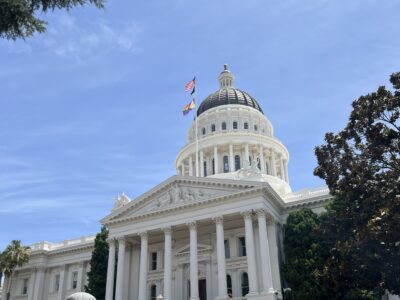EPA and the social cost of carbon
This is Part I of a two-part series of posts discussing Eric Posner’s critiques of the role of cost-benefit analysis in climate regulation.
The social cost of carbon (SCC, for policy wonks) represents the cost, in today’s dollars for the harm of emitting a ton of carbon dioxide equivalent gas into the atmosphere. Recently, the U.S. Office of Management and Budget (OMB) released an update to its SCC estimate, increasing the cost from $21 to $35 per metric ton. That means that the projected future cost of climate change, according to OMB, is more than originally forecast.
So why should we care, and what does the SCC have to do with EPA? For starters, if we believe that climate change will have a large future cost, then we should be more willing to implement regulations and policies today to lessen the risk of costly climate changes in the future. And in fact, government agencies—including EPA—are required to assess costs and benefits of proposed regulations, thanks to Executive Order 12,866 (signed by President Clinton in 1993). In particular, Executive Order 12,866 mandates
Each agency shall assess both the costs and the benefits of the intended regulation and, recognizing that some costs and benefits are difficult to quantify, propose or adopt a regulation only upon a reasoned determination that the benefits of the intended regulation justify its costs.
Therefore, when estimating the benefits of proposed emissions regulation, EPA may need to account for the benefits of reducing greenhouse gas emissions, represented in part by the social cost of carbon. By raising the estimated social cost of carbon, proposed regulations will appear more reasonable in any cost-benefit analysis. No surprise, then, that Republicans in the House and Senate have called for hearings and debates on the change.
Posting to Slate last week, Eric Posner argued that the social cost of carbon is based on questionable economics and thus imperils any regulation that uses the SCC to justify imposing economic costs on U.S. industry or consumers. According to Posner, “[t]he current SCC calculation embodies the worst of both worlds: too low from the standpoint of global well-being, too high from the standpoint of law.” His first point is that the economic models upon which SCC is based are too optimistic and fail to consider a scenario in which (catastrophic) climate change results in a leveling out of global GDP. Thus SCC is insufficient because the true costs are higher. His second point is that the SCC both fails to properly account for industry that may move overseas if the U.S. imposed a carbon tax and that the SCC impermissibly considers benefits to non-residents (i.e., the global population). Both of these failures lead to an overly high SCC estimate.
While Posner’s economic critique of the modeling to develop the SCC estimate may be completely accurate, there are reasons to doubt his conclusions in the Slate article.
- Regulating carbon emissions from coal and natural gas have lots of ancillary benefits besides reduction in risk of harmful climate change. SCC may not even be necessary to justify the regulation, although certainly helpful in justifying more stringent regulation.
- Many sections in the Clean Air Act have their own take on the primacy of cost-benefit analysis. Criteria pollutants, for example, are regulated first on a health standard for which SCC may be inapt. EPA is moving to regulate new and existing fossil fuel power generators using section 111 of the Clean Air Act. Under section 111, EPA (and/or the states) must establish a standard of performance that these generators must meet. Per the section 111 regs, the standard of performance must “tak[e] into account the cost of achieving [the best demonstrated system of emission reduction] and any nonair quality health and environmental impacts and energy requirements.” While it is fair to call this balancing a cost-benefit analysis, it is not at all clear that SCC will be an important driver in this analysis.
- Posner’s objections to using the SCC are not necessarily reflected in section 111. It is not clear that EPA must consider speculative leakage costs to the U.S. economy, such as Posner’s example of coal producers shifting to exporting coal abroad, when establishing the standard of performance. Nor is it clear that EPA lacks authority to consider benefits to the global population—including Americans living abroad—when regulating under section 111.
-
Courts are reluctant to reject reasoned studies. Particularly when dealing with technical models, future estimates and a lot of unknowns, courts give a lot of leeway to agencies. The assumptions are not “arbitrary,” as Posner asserts, but at most, not particularly well thought-out. That will not lead most courts to throw out complex, politically important regulations. Courts will give EPA regulations under section 111 a lot of deference, particularly when it comes to the expert-driven analysis needed to define the standard of performance.
Posner is really critiquing the regulatory approach. As he says in the beginning of his post, there is a “simple answer” to how to regulate carbon. “Just figure out the cost of the harm . . . and then impose a carbon tax equal to that amount. This is called a Pigouvian tax . . . .” Of course, as Posner then attempts to demonstrate, figuring out the harm—particularly at the specificity of a dollar cost per ton of greenhouse gas emissions—is quite difficult.
And this is where a carbon tax would part ways with a cap-and-trade scheme. A carbon tax, just like Posner’s maligned power plant regulations that opaquely reference the social cost of carbon, depends on knowing the price at which to base the tax. From a regulator’s point-of-view, imposing an emissions tax on a power plant is much like imposing a restriction on the level of emissions: either way, you must determine the appropriate level, which means going down the rabbit-hole in search of the precise cost to all future generations of a ton of carbon dioxide emitted today.
But a cap-and-trade scheme avoids much of this economic voodoo modeling. You still have to know your target—the amount of carbon you can accept entering the atmosphere—but you need to know this for a carbon tax or other regulation as well. Once you have that target, impose a cap and let the market sort out the social cost of carbon (hint: in a perfect market, it would be the price at which carbon allowances trade).
Reader Comments
3 Replies to “EPA and the social cost of carbon”
Comments are closed.







Rhead,
Thanks for this excellent post.
One question about the last paragraph: even assuming for either a tax or a cap, that the target is set based on an honest estimation of future damages and mutually-agreed upon normative judgments (discount rate, US vs global benefits, etc), doesn’t setting the cap entail making some judgment about an acceptably future damages schedule? And doesn’t that land you in the same SCC problem as for a tax?
Yours,
MW
Another way of putting the above is that generally, Economists view cap and trade and carbon tax as equivalent policies if the regulator has perfect information. See Weitzman Price vs Quantities on this.
Michael,
Yes, you could set the cap based on an estimation of future damages, etc. And that would require a judgment about a future damages schedule. I don’t think you have to take that route, however, to define a cap. And given the vast uncertainties with SCC, I don’t find it to be a particularly convincing approach.
A cap represents the total amount of carbon that society is willing to put into the atmosphere. That total amount could be based solely on some health-based or policy judgment without ever reaching SCC. For example, basing it on keeping human climate-related deaths at less than 1 in a million. Or basing it on less than 50% loss of species. Or the much simpler, possibly less defensible approach of line drawing. Such as returning to 1990 levels. A lot of modeling and science could go into this approach, but none of it requires SCC. (Note that this modeling and science would be required to estimate SCC, so it is not like SCC lets you dance around this issue.)
It is clear, however, that a cap should probably decrease gradually over time (i.e., increase the tax on emissions over time), to avoid the likely economic shocks that would result from imposing a cap (or tax) all at once. Certainly the rate of decrease would be an economic question. But the question is mostly one of ability of industry to adapt, elasticity of energy demand, availability of substitutes, etc. SCC could be useful in this context, but I would argue that it is not necessary. And of course, policymakers may be perfectly justified in just drawing a line from current emissions to desired future emissions (as CARB basically did).
Best,
Rhead